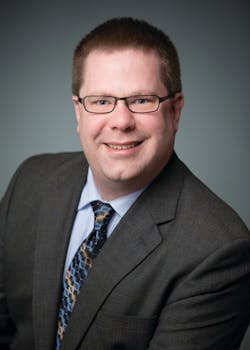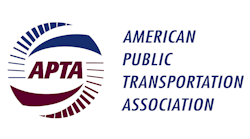Chris Hemmer is a nationally recognized expert in the engineering of bus rapid transit (BRT) systems. He has more than 16 years of transit design experience, including a decade in BRT design. He has a proven record for design and project delivery of major BRT and light rail transit (LRT) projects. Hemmer is an acknowledged expert in the dynamics of buses docking at transit stations and rapid transit stops, having presented on the topic at national industry conferences.
Hemmer has been involved in the development of Eugene, Oregon’s pioneering BRT system from its beginning. On the region’s first line, he served as a project engineer and deputy project manager. For the second line, known as the Gateway EmX BRT Extension, he led the project design team as deputy project manager, then project manager. Delivered on schedule and under budget, the 5.9-mile, $41 million Gateway EmX BRT Extension project created 400 jobs during its construction and provided a significant long-term transportation improvement for the Eugene-Springfield region while demonstrating the value of BRT system implementation.
The Gateway EmX BRT Extension has also provided critical industry technical development of bus automated guidance technologies, which will help BRT lines achieve a level of precision comparable to rail transit systems. As another example of his technical leadership, Hemmer provided valuable expertise in support of the University of California Berkeley’s cutting-edge electromagnetic guidance system development project, especially in its demonstration deployment phase in Eugene. He has also provided technical analysis of all advanced guidance options to other BRT projects.
As each new line was added, Hemmer’s role and responsibilities grew. He currently serves as project manager of the third line extension.
Hemmer’s work on the Gateway EmX BRT extension was recognized by the American Council of Engineering Companies (ACEC) of Oregon with a 2012 Grand Award in the transportation category and by the national ACEC with a 2012 National Recognition Award (honorable mention, transportation category).
Hemmer is a registered professional engineer licensed in both Oregon and Washington. He has led several cutting-edge industry projects and has been a major task lead on others. This experience has led him to write and present several papers regarding station design, vehicle-station interface, and advanced guidance technologies, all of which have helped to advance the U.S. public transportation industry’s experience with BRT.
Hemmer is an active benefactor of local charitable organizations, including Portland’s Doernbecher Children’s Hospital, a no-kill animal shelter, and several religious organizations supporting couples mentoring, homeless aid, and foreign ministry. In conjunction with his local office, he participates in community support challenges such as school supply and toy drives.
“I enjoy the problem solving associated with projects that are at the leading edge of the industry today. When I started engineering on bus rapid transit projects more than a decade ago, few in North America knew how to go about providing this ‘new’ type of high-quality and highly efficient transit mode. I had the chance to develop techniques for how coaches dock at stations to allow easier boarding and alighting and methods to minimize right of way impact from transit way construction. I continue to refine these techniques on each and every project and look to use new and emerging technologies that aid in the advancement of BRT as a best value choice for providing high-capacity transit.
“Finding something you can be passionate about as a career can sometimes be a challenge in itself and I look back on specific event that set me on the road I’m on today. When I was in high school I had planned my academics with a focus on getting into a good university and eventually law school. I was encouraged however to visit an engineering school open house where I met a professor, and eventual mentor, who suggested I use engineering as a potential basis to prepare for a career in law. I found however that engineering was where my heart and head worked best and I set my career focus on improving the infrastructure we all use every day, finding a home in transit engineering, first with light rail and then with BRT.
“I feel like transit is a key component to a healthy urban environment and strong community. It provides mobility to those who are otherwise unable to get around, either due to physical or economic challenges in their lives. It allows alternatives to the automobile and is a smart choice for investing public funds in a world where we can’t simply build the highways wide enough to address the ever increasing congestion.
“I think the transit industry is at the cusp of a renaissance in efficiency. Bus rapid transit and streetcars are providing new strategies to address urban transportation needs, and techniques from those technologies can trickle down, like transit signal priority, to fixed-route service to improve the overall reliability of service. Coaches are getting higher quality interior and exterior design, improving the customer experience and changing the perception of bus transit. And hybrid propulsion systems are no longer experimental studies but viable technologies to reduce emissions and potentially save on fuel costs.”





